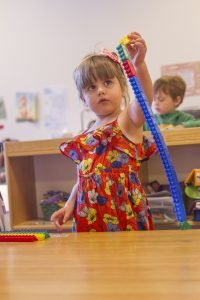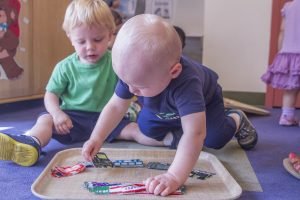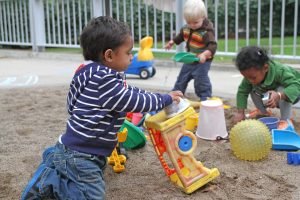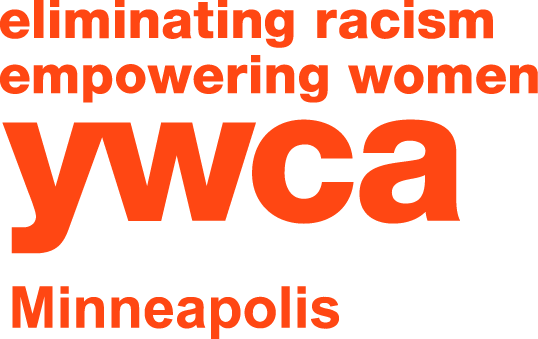The Journey of Learning with YWCA Minneapolis
Most of us have heard about the importance of incorporating science into the classroom experience, but what does that look like in an early education setting? How do we expose our youngest learners to science in the classroom, and why is that so important?
Learning Through Play
As adults, many of us want to explain concepts to children, but that’s not the best practice for teaching children. At YWCA Minneapolis Children's Center at Ecolab learning center, we can’t even begin to count how many times our director has been asked: “Is what they are doing now going to help them learn enough to be ready for kindergarten?”Children learn from how they experience their environment and the more opportunities for open-ended experimentation, the better. Cause and effect — "If I do this, this is what happens" — allowing for many opportunities to explore the environment around them authentically. Learning in this way not only teaches the lessons provided but also develops the very way a child approaches learning.When children learn through play, they develop inquisitive minds. You can see it when you give a 6-month-old a new interesting item. They will look at the item, often turning it this way and that to see every part of the object. They will feel the item and the different textures it may have to delight, seeing how fast they can get it to their mouth to touch it with their tongue and see how it tastes, an explosion of sensory input. So much information is provided in seconds, and every new item is another scientific experiment for the young senses. As children age, the way they explore changes, but it is very noticeable to the trained eye. In one of our toddler rooms, children’s scientific approach to learning can be watched by observing several toddlers gathered around a large clear tube connected to the wall at a downward slant. The children will put objects in the tube and watch the item go down the slope and out the other end. The adult intention for the tube is for cars to go through, but of course, our little scientists find all sorts of things that can fit in the tube.As children age, their experimentation with science becomes more thinking on science and education focused, such as patterns and magnetism. Will it sink or float among just a few? Science in the classroom begins a long time before children are ready for these advanced concepts. YWCA Minneapolis follows the National Association for the Education of Young Children (NAEYC), which provides 10 Tips to Support Children’s Science Learning that helps explain when a child asks a question about science:
As children age, the way they explore changes, but it is very noticeable to the trained eye. In one of our toddler rooms, children’s scientific approach to learning can be watched by observing several toddlers gathered around a large clear tube connected to the wall at a downward slant. The children will put objects in the tube and watch the item go down the slope and out the other end. The adult intention for the tube is for cars to go through, but of course, our little scientists find all sorts of things that can fit in the tube.As children age, their experimentation with science becomes more thinking on science and education focused, such as patterns and magnetism. Will it sink or float among just a few? Science in the classroom begins a long time before children are ready for these advanced concepts. YWCA Minneapolis follows the National Association for the Education of Young Children (NAEYC), which provides 10 Tips to Support Children’s Science Learning that helps explain when a child asks a question about science:
“It lets us know they are thinking about how the world works. We can respond in ways that encourage their scientific thinking.

Continue The Journey of Learning
We agree that children learn best by playing and interacting with their environment. We work very hard to make sure we are providing new and exciting ways for our youngest learners to explore their environment — to then have children take this knowledge and approach as they move past our classrooms into kindergarten classes. We believe this is a truly effective way to level the achievement gap that we continuously strive to eliminate, and it works!In the 2019 – 2020 school year (the most recent recorded due to COVID-19), YWCA Children’s Centers exceeded outcomes for the more than 700 children served that year, with a 91% demonstration of age-appropriate development and 91% of our preschoolers entering kindergarten proficient in school readiness standards. We must be doing something right!LEARN MORE ABOUT YWCA EARLY CHILDHOOD EDUCATIONSCHEDULE A TOUR
